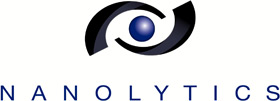
Subcutaneous administration of biologics often results in lower cost and increased patient safety and convenience, especially in a self-administration setting via injection devices such as pens, auto-injectors, or on-body-injectors. To deliver the appropriate dose, these drugs often require a high-concentration formulation, since the injection volume is much lower compared to an intravenous infusion. The same holds for many ophthalmology drugs: Injections into the eye ball require high purity and high concentration, since the injection volume is very limited.
Nanolytics offers a specific detector (AIDA – Advanced Interference Detection Array) to tackle even extremely high protein concentrations up to approximately 150 mg/mL. Along with the improved availability of specific data algorithms, Nanolytics will provide you with unique services for quantifying aggregates in highly concentrated protein solutions.
CASE STUDY: Sedimentation velocity of an antibody at 147 g/L using data acquired with the AIDA interference detector.
One prerequisite for the analysis of highly concentrated samples is the detection of steep concentration gradients with sufficient resolution: Commercially available ultracentrifuges are not able to resolve such steep interference profiles. With the development of Nanolytics Instruments’ Advanced Interference Detection Array (AIDA), it has become possible to register interferograms of solutions as highly concentrated as 150 g/L.
In the SCD, monomeric and dimeric antibody as well as antibody aggregates are resolved.
Published as doi: 10.1371/journal.pone.0120820.g012


